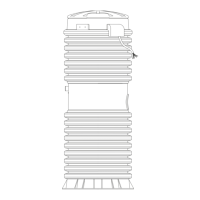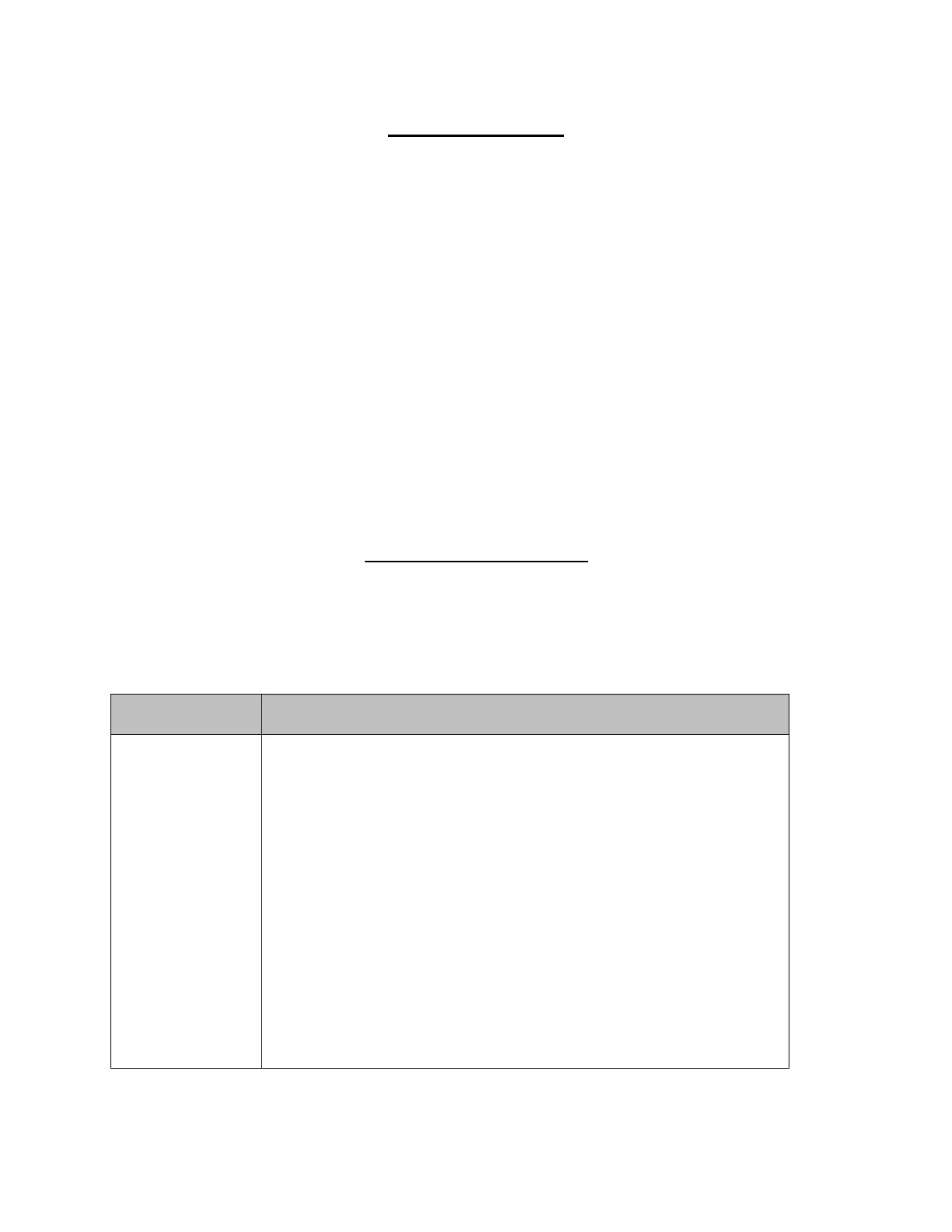13
Site Survey (Tank)
1. Open the Tank and Inspect
Record the following on the service tag.
a. Is the tank/access way flooded?
a. If yes, where did the water enter?
b. Was the EQD below water?
c. Is the equalizer hung properly?
d. Is the water tight connector nut tight?
2. Disconnect the EQD and Inspect
Record the following on the service tag.
a. Is the EQD Dry?
b. Is the EQD assembled correctly?
3. Repeat the power-off Continuity Checks at the EQD.
Troubleshooting Charts
The following troubleshooting tips will help diagnose more frequent causes of some grinder
pump problems.
Alarm On – Pump Running but not Pumping
Blocked
Discharge Line,
Worn Stator or
leak in pump
discharge
assembly
Check the amperage. If the amperage is high (8 amps or higher),
turn off the pump and check the discharge line for blockage.
Confirm that the pump has not been damaged by disconnecting the
discharge piping and recycling the fluid in the tank. Turn the pump
power on and check the amperage. If the amperage remains high,
replace the pump and return the failed pump to shop for possible
repair. If amperage returns to normal, clear blockage in discharge
line and re-check amperage.
If the amperage is low (4.9 amps or less), the pump must be pulled
and the Stator (and possibly the rotor) replaced. Visually inspect
the Check/Anti-siphon valve for cracks and the discharge line for
ruptures. Repair or replace if necessary. The cause of the failure
must be determined and corrected before reinstallation or the
pump will fail prematurely again. Chapter 6 – Pump End, describes
how to identify and correct causes of Stator and Rotor wear.
Table 3 –7

